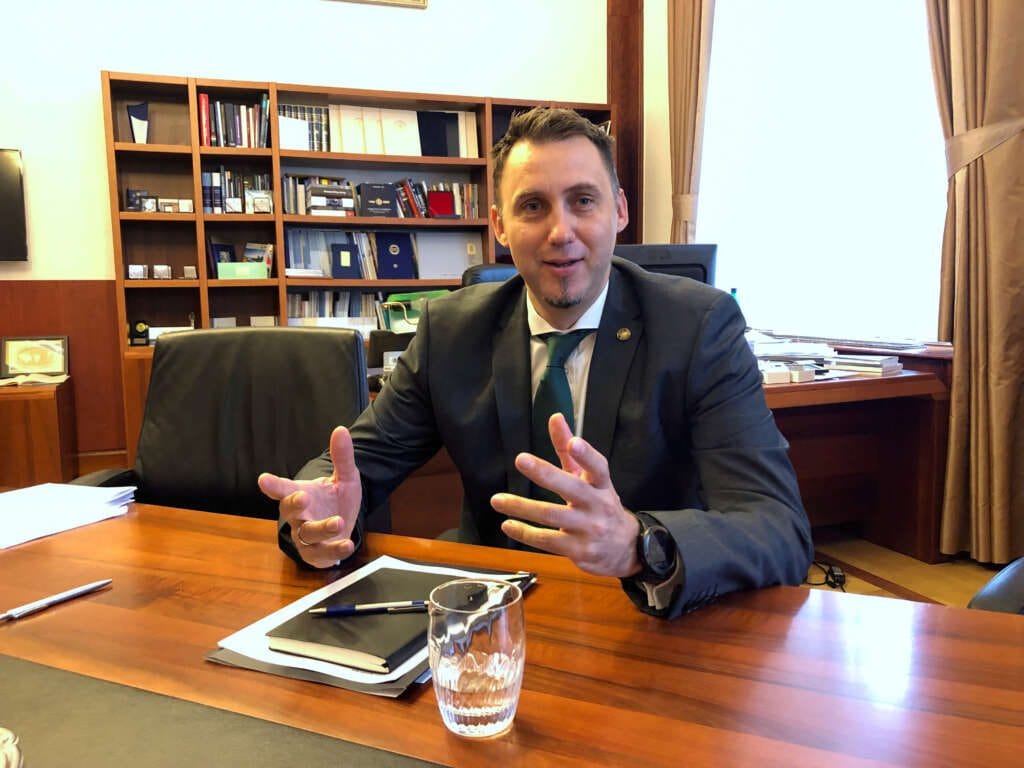
BUDAPEST (Reuters) – Hungary’s central bank could cut its 25% top collateralised loan rate next week as part of a “multi-step process” towards policy normalisation, its deputy governor said on Wednesday, jolting markets as the forint lost almost 2%.
With many economists saying inflation in central Europe has peaked, Deputy Governor Barnabas Virag’s flagging of the narrowing of the interest rate corridor used by Hungarian policymakers looked to set the stage for what would be the region’s first rate cut since 2021.
Policymakers tightened policy sharply starting in mid-2021 to quell surging inflation.
Virag told the business website vg.hu in an interview published on Wednesday that the latest inflation data – showing a headline rate above 25% – was in line with expectations.
The bank could return price growth to single digits by the end of the year using “coordinated and disciplined” economic policy, he said, while it could decide on “a significant narrowing” of the upper end of its interest rate corridor at next Tuesday’s meeting.
“Extreme risk scenarios have been priced out, so we no longer need to maintain such a huge room of manoeuvre,” Virag said.
The National Bank of Hungary (NBH) has the European Union’s highest base interest rate, at 13%.
Last October, when the forint was plumbing new lows, it raised its overnight collateralised loan rate to 25% from 15.5%.
The rate is the top of its corridor used to guide interbank markets toward the policy rate, setting limits on rate-setting. The bottom rate, used for overnight deposits, stands at 12.5%.
“TRIAL BALLOON”
Last October, the bank also launched a new one-day deposit with an 18% interest rate, which over the past half-year has helped lift the forint from all-time lows of around 430 to the euro. The forint traded at 378.30 to the euro on Wednesday, down 1.84% on the day.
Virag said the question of the 18% rate on the one-day deposit could be on the agenda only at subsequent monthly policy meetings.
“A cautious approach, keeping market stability in mind, continues to be warranted in this issue,” Virag said, referring to the 18% deposit rate.
Piotr Matys, senior FX analyst at In Touch Capital Markets, said that Virag’s comments could be a way to test how markets will react to lower rates.
“Lowering the upper end of the interest rate corridor would be a technical move — like a trial balloon,” he said.
Morgan Stanley said it expected a cut in the top 25% rate to around 18-20% next week. The bank might ease more with cuts to the 18% one-day deposit rate beginning in June, it said.
Hungary’s headline annual inflation eased for a second straight month in March but only marginally, while its economy slipped 0.4% quarter-on-quarter to end 2022.
Prime Minister Viktor Orban’s government has put pressure on the central bank to start lowering borrowing costs to help a recovery.
Central bank Governor Gyorgy Matolcsy and Finance Minister Mihaly Varga held talks last week about ways to wrestle down inflation and reduce borrowing costs.
(Reporting by Krisztina Than, additional reporting by Jason Hovet and Alan Charlish; Editing by Robert Birsel, Kim Coghill and Sharon Singleton)


